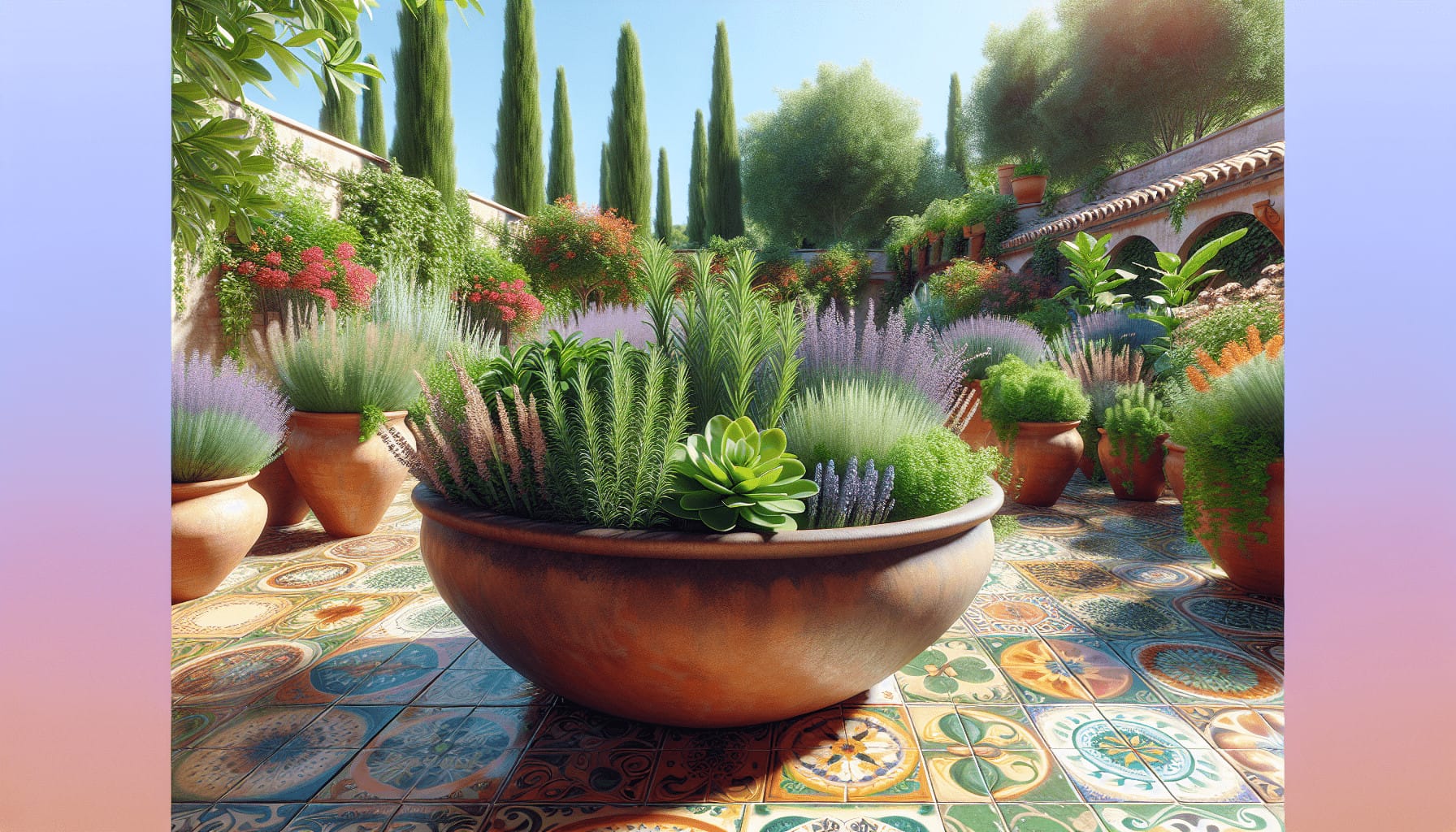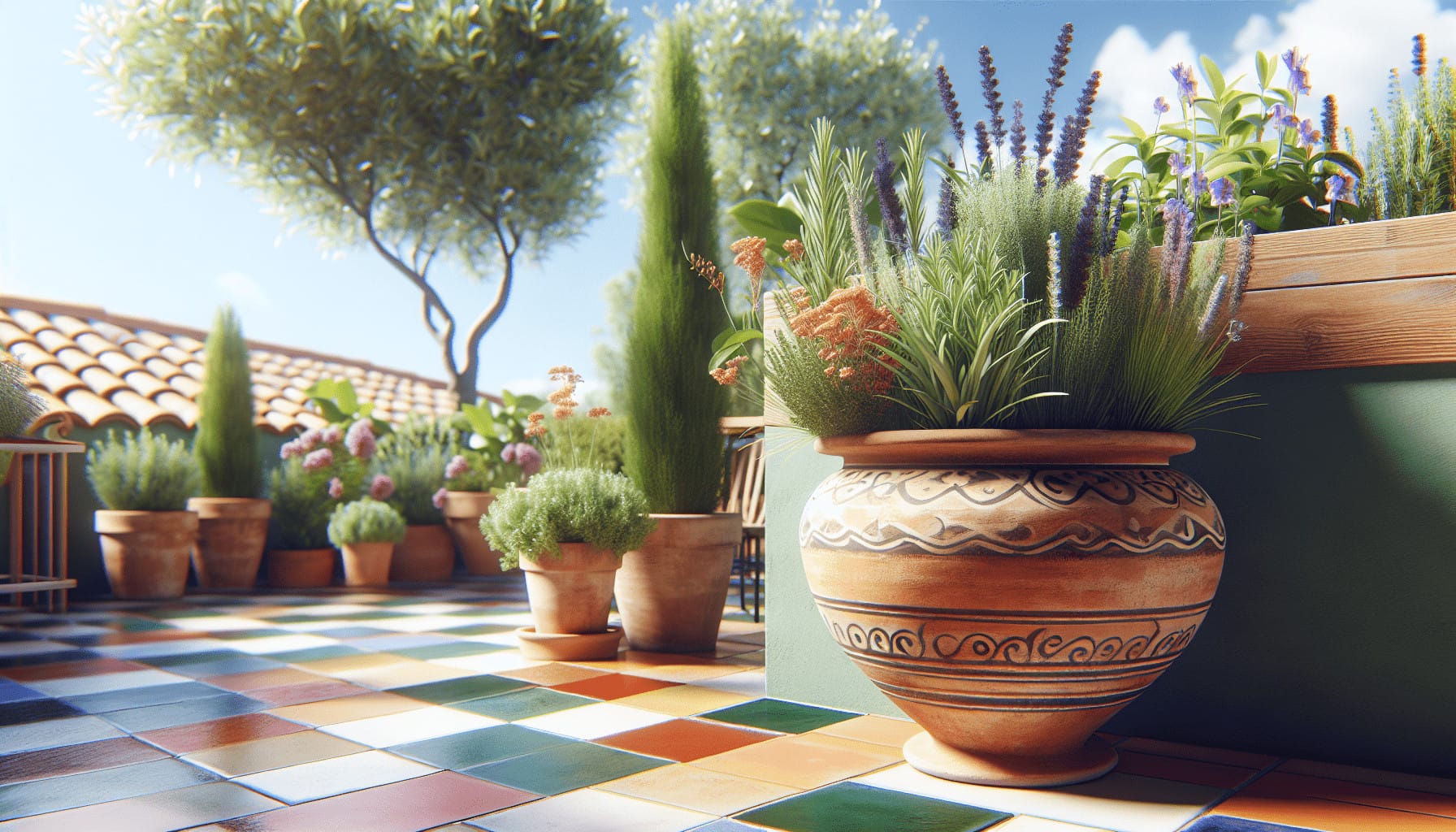Have you ever dreamed of transforming your rooftop into a serene oasis with a Mediterranean vibe? With the right tips and guidance, you can turn that dream into a reality. In this article, we will provide you with expert advice and practical tips for creating a rooftop garden with a Mediterranean feel, so you can enjoy your own little piece of paradise right at home.

Benefits of a Rooftop Garden
Having a rooftop garden not only enhances the beauty and ambiance of your home but also offers a myriad of other benefits. Rooftop gardens provide insulation, reducing the energy needed to cool and heat your home. They also help improve air quality, absorb rainfall, reduce pollution, and create a habitat for wildlife. Additionally, rooftop gardens can increase the value of your property and provide you with a peaceful retreat in the midst of a bustling city.
The Mediterranean Vibe
A Mediterranean garden is known for its vibrant colors, lush greenery, and aromatic plants. It evokes a sense of relaxation, tranquility, and romance. To create a Mediterranean vibe in your rooftop garden, you will need to incorporate elements such as terra cotta pots, colorful tiles, wrought iron furniture, and fragrant herbs. Think of the sun-soaked landscapes of Italy, Greece, and Spain, and let that inspire your design choices.
Planning Your Rooftop Garden
Before you start creating your rooftop garden, it’s essential to do some careful planning. Consider factors such as the weight-bearing capacity of your roof, access to water, sunlight exposure, and local climate conditions. Make a rough sketch or map of your rooftop space, taking note of any existing structures, obstacles, or features that you want to incorporate into your design.
Assessing Weight-Bearing Capacity
One of the most critical considerations when planning a rooftop garden is the weight-bearing capacity of your roof. Consult with a structural engineer to determine how much weight your roof can support, including the weight of soil, planters, furniture, and people. You may need to reinforce your roof or use lightweight materials to ensure safety and stability.
Sunlight and Shade
Take note of the sunlight exposure on your rooftop throughout the day and year. Different plants have varying sunlight requirements, so choose plants that will thrive in your rooftop garden’s specific light conditions. Consider creating shady areas with pergolas, umbrellas, or trellises to protect sensitive plants from intense sunlight and provide relief on hot days.
Access to Water
Ensure that you have easy access to water for irrigation in your rooftop garden. Consider installing a drip irrigation system or setting up rain barrels to collect and store rainwater. Watering rooftop plants can be more challenging due to the exposure to wind and heat, so make sure you have a reliable water source to keep your plants healthy and thriving.
Designing Your Rooftop Garden
Once you have completed the planning phase, it’s time to move on to designing your rooftop garden. Consider your personal style, the Mediterranean theme, and the practical aspects of your space while creating a layout that is functional, inviting, and visually appealing.
Mediterranean Plants
When selecting plants for your rooftop garden, choose species that thrive in Mediterranean climates. Consider planting aromatic herbs like rosemary, lavender, thyme, and oregano, as well as colorful flowers like bougainvillea, geraniums, and succulents. Olive trees, citrus trees, and grapevines are also iconic Mediterranean plants that will add a touch of authenticity to your garden.
Creating Levels and Zones
To make the most of your rooftop space, create different levels and zones within your garden. Use planters, raised beds, and containers to add depth and visual interest. Designate areas for dining, lounging, and gardening to maximize functionality and create a harmonious flow. Consider using Mediterranean-inspired materials like terracotta, stone, and wood to enhance the overall aesthetic.
Incorporating Water Features
Water features such as fountains, ponds, or water walls can add a calming element to your rooftop garden and enhance the Mediterranean ambiance. The sound of trickling water, the sight of reflections, and the coolness of water can create a soothing and relaxing atmosphere. Consider the scale, style, and maintenance requirements of water features when designing your rooftop garden.
Adding Decorative Elements
Enhance the Mediterranean vibe of your rooftop garden by adding decorative elements such as colorful tiles, mosaic patterns, wrought iron furniture, and lanterns. Consider incorporating Mediterranean-inspired textiles like pillows, rugs, and curtains to create a cozy and inviting space. Don’t forget to add lighting for evening ambiance, using string lights, lanterns, or sconces to illuminate your garden after dark.
Maintenance and Care
Keeping your rooftop garden healthy and vibrant requires regular maintenance and care. Follow these tips to ensure that your Mediterranean-inspired oasis continues to thrive and flourish throughout the seasons.
Watering and Irrigation
Monitor the moisture levels of your plants regularly and water them as needed, taking into account the unique conditions of a rooftop garden. Consider using self-watering containers, mulch, or drip irrigation systems to conserve water and ensure that your plants receive adequate hydration. Water early in the morning or late in the evening to minimize evaporation and optimize absorption.
Pruning and Trimming
Regularly prune and trim your plants to promote healthy growth, control size, and shape, and prevent disease or pest infestations. Remove dead or damaged foliage, spent flowers, and overgrown branches to improve air circulation and light penetration. Use sharp, clean tools and follow proper pruning techniques for each plant species.
Fertilizing and Feeding
Feed your rooftop plants with a balanced fertilizer to provide essential nutrients for growth, flowering, and fruiting. Consider using organic fertilizers like compost, manure, or seaweed extract to improve soil fertility and promote soil health. Follow the recommended application rates and schedules for each type of plant and avoid over-fertilizing, which can damage plants and harm the environment.
Pest and Disease Control
Monitor your rooftop garden for signs of pests, diseases, or nutrient deficiencies and take prompt action to address any issues. Use integrated pest management strategies, such as handpicking insects, applying natural predators, or using organic pesticides as a last resort. Practice good sanitation, proper plant spacing, and crop rotation to prevent the spread of pests and diseases.
Seasonal Maintenance
Adjust your maintenance routine according to the changing seasons and weather conditions. Prepare your rooftop garden for winter by protecting sensitive plants from frost, wind, and cold temperatures. In the spring, clean up debris, refresh mulch, and prune plants to stimulate new growth. During the summer, provide shade, water, and ventilation to prevent heat stress, and in the fall, harvest fruits and vegetables, plant bulbs, and prepare for the coming winter.

Conclusion
Creating a rooftop garden with a Mediterranean vibe is a rewarding and enjoyable project that will enhance the beauty, functionality, and sustainability of your home. By planning carefully, incorporating Mediterranean elements, and providing proper maintenance, you can create a peaceful oasis that reflects your personal style and connects you with nature. Follow our tips and advice to bring the beauty and ambiance of the Mediterranean to your rooftop garden, and enjoy a slice of paradise right at home.
